 Your new post is loading...
 Your new post is loading...

|
Scooped by
Jeff Domansky
November 27, 2015 11:40 AM
|
Nielsen's 'Global Generational Lifestyles' report, based on the responses of 30,000 online respondents across 60 countries, will help marketers better understand how consumer behavior differs across life stage.
The interesting take-out is that, in some aspects of life, generations are bucking preconceived notions of how they behave.
Take eating out, for example. While older generations may have more time and money to indulge in out-of-home dining, it is Millennials (21-34 year olds) who were found to eat out most often. Sixty percent eat out at least once per week and a third say they eat out three times a week or more....

|
Scooped by
Jeff Domansky
November 26, 2015 1:55 AM
|
Consumers plan to use a combination of online and traditional channels to research and purchase gifts this holiday season, according to a recent report from the Blackhawk Network.
The report was based on data from a September 2015 survey of 1,140 adults living in the United States.
Some 73% of respondents say they plan to research gifts online this year, 66% plan to visit retail stores in person, and 46% plan to simply ask recipients what they want.
As for actually purchasing holiday gifts, 84% of respondents say they'll visit brick-and-mortar retail stores, 78% plan to shop online, and 20% will use a retailers' mobile apps....

|
Scooped by
Jeff Domansky
November 20, 2015 11:08 AM
|
IBM’s Watson platform has another new side project: making holiday gift predictions. The company is releasing a new iPhone app called IBM Watson Trend, which they claim can predict which gifts are most likely to sell out at stores and e-commerce sites. While aimed at helping consumers, the app also shows the investment IBM has been putting into expanding Watson into the business world.
The app shows "trending" gifts in three categories—toys, consumer electronics, and health and fitness—alongside explanatory information about why those particular objects are trending. This includes analysis of hot purchases such as Lego City and the Nikon D-SLR, as well as products like Mattel's "Hello Barbie", which are declining in popularity (IBM says that, although popular with parents, children feel the interactive doll has an outdated style)....

|
Scooped by
Jeff Domansky
November 16, 2015 2:33 AM
|
For this holiday season, 80% of consumers plan to spend as much as or more than they did last year, according to a recent report fromSAS.
The report was based on data from a survey of 3,458 consumers in the US, Canada, the UK, Australia, and New Zealand.
The US leads expected spending growth, with 29% of US respondents saying they plan to spend more this year. Most Canadian shoppers, on the other hand, say they are tightening their budgets this year.
Millennial respondents (age 18-29) are the most likely to say they will increase their spending this year, whereas older consumers are the most likely to say they'll stick with last years budget....

|
Scooped by
Jeff Domansky
November 7, 2015 3:26 AM
|
A recent study from Accenture and SAP hybris found that B2B buyers are looking for a seamless omni-channel buying experience, especially online. According to the study, digital experiences are becoming more important to B2B customers – leaving businesses that have sub-par online experiences behind.
In 2015, 75 percent of B2B buyers said they research at least 25 percent of their work-related purchases online, even if they made the actual purchase offline.
Most B2B buyers begin the research process by visiting consumer marketplaces, such as Amazon or eBay (33 percent), or search engines (26 percent). However, B2B businesses are struggling with integrating the online and offline experience: Only 60 percent of respondents have customer names available on all channels, while only 48 percent have customer shipping and billing addresses available on all buying channels...

|
Scooped by
Jeff Domansky
October 18, 2015 4:28 AM
|
Findings from the 2015 Pitney Bowes Global Online Shopping Study released today confirm that search engines like Yahoo, Google and Bing remain top choices for consumers to find products online. Furthermore, marketplaces such as eBay and Amazon along with retailers remain dominant for today’s consumer transactions, according to a press release.
The study found that 33 percent of millennials use mobile devices or a mix of devices, compared to 24 percent of overall consumers in the study.
The research further reveals that online shoppers globally share commonalities in discovery and purchase of products but they maintain “unique global shopping preferences and behaviors that vary by country.” Retailers looking to expand their brands globally “should consider cultural norms and shopping preferences of consumers around the world.”...

|
Scooped by
Jeff Domansky
October 12, 2015 1:45 AM
|
Almost 1 billion websites are online right now. About 150,000 products can be found in Amazon’s “Health and Personal Care” category when you search for “soap”. You can find the same number of books in the “Books” category if you search “time management”.
In 2014 alone, about 1715 TV series aired in the U.S. With around 1.4 million apps in Apple Store, over 80% of the apps cannot be found in any of the store’s categories. Some choices are really hard to make — many options are available with little to no differentiation. At least some products, like soap or toothpaste, do not require us to do extensive research.
Choices which result in big commitments for us are the ones which require thorough research. Commitments can vary in their nature. Two obvious ones are money and time commitments. Say you want to buy a book or try a new customer management software. In both cases, the price won’t be a concern (say $10 for a book and a free trial period for the software), but the time you would spend reading the book or learning how the software works are your big commitment. You may lose time, and that’s why nowadays, we, as modern-day consumers, are overloaded with choices and feel a special type of purchase-related anxiety.
Money-related commitments are common as well. Say you want to download an app for $4.99 or subscribe to some service for $100 per year. In the case of money commitment, the anxiety is twofold for most of us. First, we feel anxiety from not being sure that the product we buy is the best one. Second, we aren’t sure if the debit card we just used is now in overdraft....

|
Scooped by
Jeff Domansky
October 1, 2015 2:39 AM
|
If you listen to marketers and advertisers, the key to success these days is targeting. “The right ad to the right person at the right time” is the common mantra.
Nope, says a new survey from brand expert network Experticity, the 2015 Marketing Mix Survey. The key driver in making a sale is the trust possessed by a source of product information.
Conducted by ReRez Research, the survey finds that 83 percent of marketers think advertising — online, broadcast, and print — is effective in influencing buyer decisions. But less than half of consumers — 47 percent — trust or believe advertising....

|
Scooped by
Jeff Domansky
September 26, 2015 4:47 AM
|
Accenture went on a journey to understand consumer preferences to shop seamlessly across channels and the ability of retailers to deliver that seamless experience.
Consumer Research SurveyAccenture surveyed nearly 10,000 adult consumers in November 2014 in 13 countries around the globe: Brazil, Canada, China, France, Germany, Italy, Japan, Mexico, South Africa, Spain, Sweden, United Kingdom and United States.
The survey targeted respondents who shop in a multi-channel way and use the internet and their smartphones regularly....

|
Scooped by
Jeff Domansky
September 18, 2015 12:52 AM
|
The brainiacs at Harvard and Stanford are at it again. Just this past month in the Journal of Marketing Research, several Ivy School consumer neuroscience researchers led by Dr. Uma Karmarkar, whom I had the opportunity to interview for this piece, explained to me how putting the price first (called price primacy)—before a user sees the actual product—affects buying behaviors.
Specifically, according to the researcher’s comments in a Working Knowledge magazine exposé, “that price primacy (viewing the price first) makes consumers more likely to focus on whether a product is worth its price, and consequently can help induce the purchase of specific kinds of bargain-priced items.”
Mind. Blown. Let’s look at three pricing strategy examples and some specific takeaways from Karmarkar’s findings to see how we can repurpose her research and turn it into actionable solutions....

|
Scooped by
Jeff Domansky
September 10, 2015 3:06 AM
|
The shopper journey is getting shorter. On average, consumers now spend approximately 68 days researching a major purchase decision, according to research from Synchrony Financial. This is a substantial drop from 2014, when shoppers spent approximately 80 days researching potential purchases.
The survey explored consumer attitudes and the path-to-purchase across 13 categories: Appliances; automotive service, tires and products; electronics; eyewear; fine jewelry; flooring; home improvement; furnishings; bedding and mattresses; lawn and garden; musical instruments; sewing; and sports and fitness equipment.
Consumers researching fitness equipment spent the least amount of time, 49 days, before making a purchase decision. On the opposite end of the spectrum, home improvement research averaged 97 days before consumers made a final purchase.....

|
Scooped by
Jeff Domansky
September 10, 2015 2:36 AM
|
Today, there’s a lot of buzz around a few words.Data: the big, the small, the relevant.Social media, contextual marketing, going viral, and influencers.
Digital advertising, mobile first, e-commerce.Everyone splashes around in the shallow end of tech trends. They convince themselves that they are swimming in the deep waters of fundamental changes in consumer behavior.
But very little is known about the central actor in this plot – the new consumer. Someone who is tickled pink and overwhelmed, all at the same time!This is why these two important concepts that are changing the way we market to consumers, matter....

|
Scooped by
Jeff Domansky
August 21, 2015 12:03 AM
|
SUMMARY: There is a growing consensus among marketers that "last-click" attribution is suboptimal. However, multi-touch attribution, or the modeling of all marketing channels' contributions to customer conversions, can be a daunting task.
In this week's chart, we look at more than two million customer interactions across eight B2B and B2C sectors to discover how many steps customers take before making a purchase to help you build an effective online attribution model....
|

|
Scooped by
Jeff Domansky
November 27, 2015 11:20 AM
|
The act of deleting photos, apps and other content from phones causes many people to feel low, research has revealed. Dubbed "Post Deletion Stress Disorder" (PDSD), experts have warned that more than half of consumers suffer emotional effects after deleting content to make way for pictures, videos and selfies.
The research conducted by Western Digital (WD) suggested that more than half (56%) of UK consumers are forced to delete content from a technology device and have then regretted doing so. The link between deleting content and feeling down because of it could stem from the fact that the average consumer is now spending roughly £3,241 on content such as pictures, music, apps and movies, only to have to delete it.
"Running out of storage space isn't the greatest challenge threatening mankind at the moment, but it's certainly an annoyance for a great many consumers," said Jim Welsh, executive vice president and general manager of Content Solutions at WD. "Our findings clearly show that currently consumers are sacrificing precious memories and valuable content to make more space on their devices."...

|
Scooped by
Jeff Domansky
November 23, 2015 8:18 PM
|
Luxury in the form of premium experiences are seeing the most action in terms of spending, while high-end goods are lagging in comparison, according to new findings from a study by Boston Consulting Group.
The key finding of BCG’s Luxe Redux report is that there has been a shift in spending habits, where 55 percent of spending comes from luxury experiences rather physical goods. In addition, experiential luxury purchases grew 50 percent faster worldwide year over year than sales of luxury goods.

|
Scooped by
Jeff Domansky
November 18, 2015 11:29 PM
|
The holiday season is once again upon us and this year marketers have an unprecedented opportunity to blow their sales out of the water. For the first time in history, consumers over 50 make up the majority — 51 percent — of all of consumer spending according to just-released data from the U.S. Consumer Expenditure Survey.
While marketers are preoccupied with Millennials — who became the biggest adult age demo this year — consumers over 50 control 70 percent of our country’s wealth, making them a significantly greater holiday sales opportunity than their kids.
One might expect that 50+ would account for the majority of health (63%) and insurance (68%) expenditures. However, when it comes to buying for everyone on their holiday lists, consider that people 50+ are now responsible for 51 percent of all entertainment spending as well as 57 percent of big ticket items such as new cars and trucks....

|
Scooped by
Jeff Domansky
November 15, 2015 8:12 PM
|
It was yet another great quarter in the world of US retail e-commerce. Revenue was up by 11.8 percent year over year, and transactions increased nearly the same amount (11.6 percent) over Q3 2014.
As the leaves begin to change color and the sun begins to set on 2015, let’s take a look at some of the trends leading the way into Q4 and this year’s holiday shopping season.
These finding below are based on the Custora E-Commerce Pulse, a free online dashboard tracking online transactions from more than 500 million shoppers, $100 billion in e-commerce revenue, and 200+ online retailers....

|
Scooped by
Jeff Domansky
October 24, 2015 3:21 AM
|
Targeting and acquiring today’s connected retail consumer has never been more challenging. Mobile commerce continues to rise, making it more difficult to build brand loyalty with a consumer who visits brick-and-mortar locations less frequently.
Consumers shop across more digital channels, continually price checking and looking at online reviews before making a decision. And consumers no longer pay attention to mass marketing messaging which have zero relevance.
The bottom line? Today’s on the go shoppers want more, are more empowered, and expect retailers to deliver in order to win their business....

|
Scooped by
Jeff Domansky
October 13, 2015 1:31 AM
|
More than 90% of shoppers say price is the top reason they buy an item from a different retailer after visiting a store without making a purchase, according to research from Cognizant. As many as 55% of shoppers leave and go to another retailer’s store if they feel the price of an item is too high.
When it comes to retailers that offer the lowest prices, there are still plenty of reasons consumers can be turned off from making a purchase. Almost half (48%) of shoppers say convenience is the top reason they will not shop at the lowest price retailer. Additionally, 32% of these shoppers prefer loyalty programs at other retailers, while 31% will shop at retailers with a better return policy....

|
Scooped by
Jeff Domansky
October 12, 2015 1:26 AM
|
Key takeawaysDigital payments make up 53% of all transactions in Australia (and rising).
Convenience of digital payments rates highly with customers, but security does not.
Retailers have the opportunity to enhance user experience and reward customers by working with payment providers to gain insights from data.
The looming growth in digital payments offers many opportunities for retailers to understand and reward their customer, says a new Strategy& report....

|
Scooped by
Jeff Domansky
September 27, 2015 11:55 PM
|
Technology now touches nearly every retail transaction, creating a vastly different shopping experience for retailers and consumers alike, according to a research report published by MasterCard.
The study found that 8 out of 10 global shoppers' purchase decisions are now informed by a digital device, with consumers saying they are smarter shoppers and getting more value than before. However, though in-store sales still account for more than 90% of all retail spending, the result is a more focused in-store shopper buying from a narrower list of unique stores than in years past. 64.180.55.243 This article is copyright 2015 TheWiseMarketer.com.
"Getting smart about smart shoppers is paramount to a retailer's success, yet shoppers consistently report they're frustrated that retailers don't get it," explained Mathieu Loury, senior vice president of Merchant Solutions for MasterCard Advisors, the professional services arm of MasterCard. "The good news is that the solutions exist to both analyse and answer these expectations-meeting your omnishoppers every step of their empowered journey, and creating an ecosystem that propels them forward."...

|
Scooped by
Jeff Domansky
September 18, 2015 2:14 AM
|
E-commerce is growing more important to the global market, with the growth of the e-commerce market being driven by the rapid adoption of smartphones and other mobile devices. A new report from OtherLevels, a mobile marketing software developer, has found that marketing in the mobile space is beginning to play a larger role in expanding the e-commerce market. Mobile commerce, in particular, could see significant gains through better marketing techniques.
REPORT SHOWS THAT MOBILE AD SPENDING IS ON THE RISE
The report contains data analyzed by Digi-Capital and shows that mobile commerce is expected to become the primary source of mobile revenue for retailers and other businesses by 2017. Consumers applications are expected to generate some $74 billion by 2017, and advertisers are beginning to see these apps as a promising opportunity to engage consumers.
The report shows that mobile ad spending will reach $42 billion by 2017. Mobile ads are becoming a very effective way to engage consumers, especially those that would be willing to use their mobile devices to shop for and purchase products online....

|
Scooped by
Jeff Domansky
September 14, 2015 4:36 AM
|
As 90% of the information our brain receives is visual and we already know that color can influence our mood, perception and behavior, we definitely should pay more attention to what color we use.
Companies are already testing colors everywhere: advertisements, banners, landing pages, buttons, call-to-action. Sometimes one color A/B Testing can reveal big secrets: HubSpot tested the color of their button and they found out that the red one outperformed the green one by 21%.
So, as you can see, colors can have a big influence. This is what happens with the decision making process, too because it may influence your online shoppers.
Enjoy the infographic below to find out more about color psychology and how it can influence your consumer purchasing behavior....

|
Scooped by
Jeff Domansky
September 10, 2015 2:45 AM
|
Customer experiences are your next competitive battleground. Are you prepared to win?
You can claim victory in this competitive differentiation war by offering the lowest prices or providing a superior, surprising, and spectacular customer experience! You may win the price battle, but that is only a short-term solution. However, you will always win with better customer-experience: providing a spectacular experience is far more sustainable.
Customer experience is your customers’ perceptions of their relationships with your brand. These perceptions result from the collection of their interactions with your brand’s touchpoints during the customer life cycle.
The rules change daily. Customer expectations of experience are set and improved by the best in class in an industry—Google, IKEA, Subway, and many others. So with every new improvement or introduction of a new way of doing things, your customer raises the bar and increases your pressure to deliver. Think Amazon’s user experience setting expectations for a B2B software company or Apple’s for a retailer, and you start to connect the dots....

|
Scooped by
Jeff Domansky
August 21, 2015 2:10 AM
|
The three Miami experiments show that as long as people think information is personalised to them they are interested – even if there is no actual personalisation. The “Dear First Name” error is not a problem if the remainder of the email contains information that is of interest to the recipient. Because of this, they think the material is personalised.
Of course, this assumes you know the real interests of your target customers. This is where web technologies let marketers down. Web page advertising, for instance, uses past browser history to target adverts to people. However, it becomes incredibly annoying when you always see advertisements for items you have already purchased. No longer is the advertising about something in which you are interested. As a result, it is like calling David by the name Kevin.
Similarly, many e-commerce sites use visitor purchase history to present a page of options that is “personalised”. However, this frequently fails. If you have been shopping for gifts for a friend at an online retailer you are not that interested in the items yourself. Hence, the so-called “personalised” page is nothing of the sort. It would be better suited to your friend.
For marketers, there is another problem. People do not like their activities being tracked. In one study conducted by Adobe more than two-thirds of people say it is “creepy” when websites track their activities. Increasingly, too, web browsers offer private browsing and Internet security suites are preventing the data from being collected in the first place. The result, inevitably, is going to be that just as marketers start to be able to gather more information to provide greater levels of web personalisation, users are going to stop that from happening....
|



 Your new post is loading...
Your new post is loading...



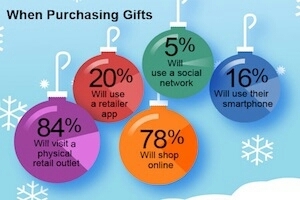



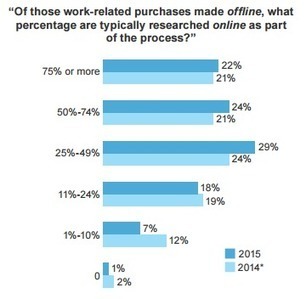
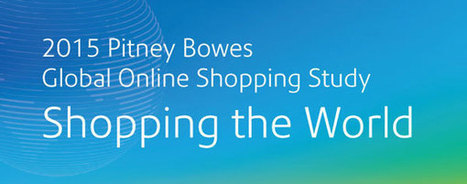



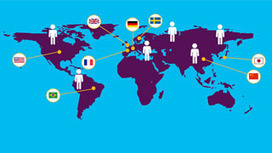

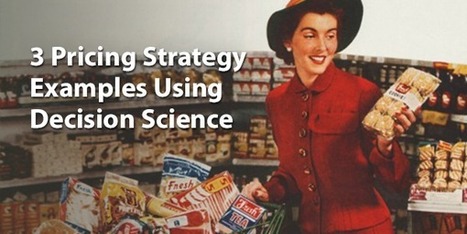

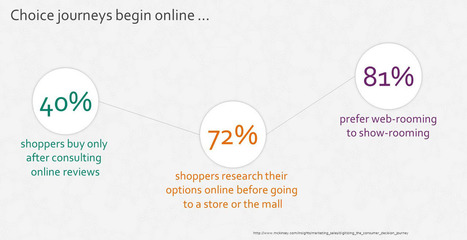


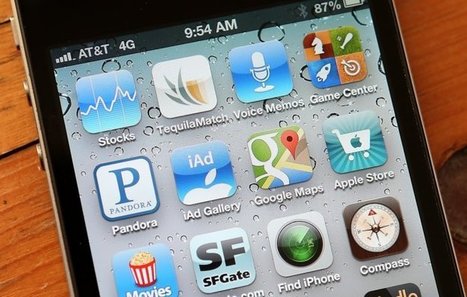


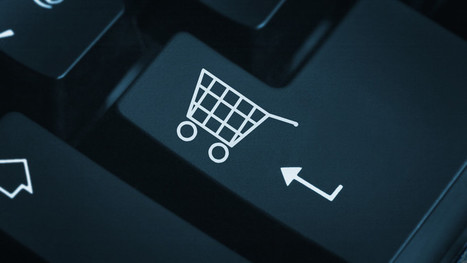

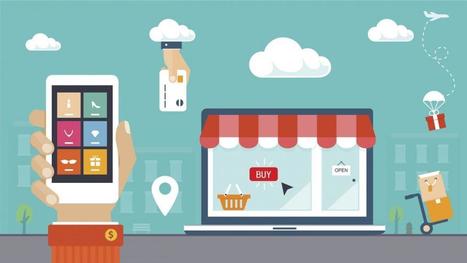



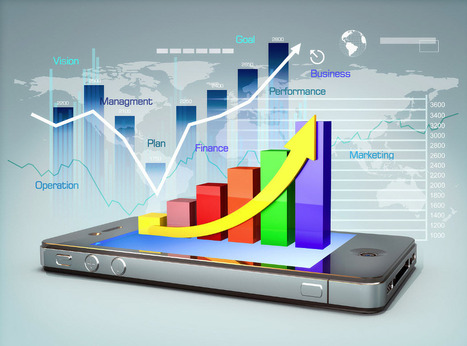


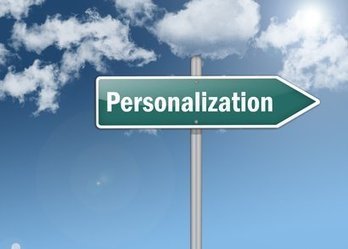





Generational gaps in the way we eat, work, live, and play are perhaps not as wide as first thought, according to new research from Nielsen.